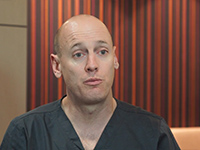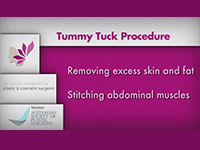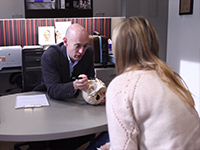In this video, Dr. Gavin Sandercoe of Norwest Plastic & Cosmetic Surgery in Sydney gives an insight into breast fat grafting.
He says that it is a viable way of increasing the size of a woman’s breasts. Fat is taken from one area of the body by liposuction, processed and then re-injected in and around the breast. After about a year, about three quarters of what is put in will stay. Women who have had breast cancers can have their breast recreated by grafting and empirical studies have proved that grafting could possibly be a protection against breast cancer.
Implants on the other hand are predictable and whatever the shape and volume that is put in stays that way unless anything untoward happens.
However, generally patients prefer to use their own tissue and not fat from somewhere else even though it is not possible to accurately predict how much of it will be ultimately retained.
Breast fat grafting is a viable way of increasing the size of a woman’s breasts. It requires liposuction in any area you don’t want fat, then processing the fat, trying to get rid of all the stuff that we don’t want as well and then re-injecting in and around the breast.
Yes it works. We’ve got a very good amount of take in a breast, we know that by the time a year after the operation there are about three quarters of what we put in, well that’s stocked if we haven’t over stepped our limits of what that the breast will take. Lastly, the other thing that is important is can breast grafting cause breast cancer.
There is evidence now that with women that have had breast cancers and breast cancer reconstruction that is involved in crafting of that breast. That their right of concern in that breast is lower than should be expected across a population study. So that gives some credit to the fact that breast grafting is one side and might possibly be protective against breast cancer.
Implants are predictable. We know that if we put in three of shape 330 cc implant we know that we are always going to have 330 cc implant and that’s going to stay where we put it in the shape we put it unless nothing untoward happens. Fat grafting is using your own body tissue where disconnecting it from a blood part and then putting it into a breast wanting it to either reconnect with a blood part or stimulate new fat production around, because that is unpredictable. What we do know is that we could get somewhere between 60 to 80 percent of fat grafting so if we put 330 cc of fat into a breast which is fairly big for a breast, you’d probably get 330 cc for a bigger breast, we know that maybe there would be 200 cc that would still be there in a year.
The big advantage is that people want to use their own tissue. And look the other thing is to get that fat; if you are getting it from somewhere else you don’t want that fat. That’s one of the big advantages of that procedure. Patients are generally very happy but the thing that patients need to keep in mind is it’s an unpredictable procedure. And I can’t and nobody can say that if I put 300 cc of fat in, are you going to keep 150 or 180 or 200 cc of that fat after one year.
Yes, it’s a more natural fill but the biggest issue with it is the unpredictability.

Procedures
About


This website contains information about cosmetic and plastic surgery procedures and is intended for persons 18 years of age or older.






















